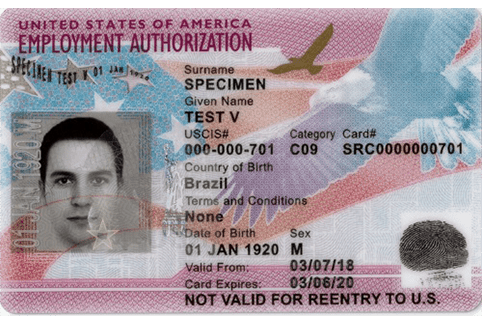What is a resume?
A resume is a document that lists your work experience, education, and other qualifications. It is usually one page and offers a first impression of who you are. Employers look at resumes to see if your skills and experience match the position.
In many countries, a resume is called a CV (curriculum vitae). In the U.S., “resume” is the common term.
Employers often receive hundreds of applications. A clear and professional resume helps your experience and strengths stand out. Many immigrants and refugees already have valuable skills – these tips will help you present them in a U.S. format that employers expect.
Improve your resume with these 10 tips:
1. Put your name and contact information at the top.
Make sure it is easy to read. Make your name bold, and consider using a shortened version of your name that is easy for employers to read. Do not include your middle name, especially if it is long.
2. Use a U.S. phone number and email address.
Do not use an international or WhatsApp number. Write your phone number using the standard U.S. format: (123) 456-7890.
Use a professional email, for example, one that includes your first and last name, not one with nicknames or foreign domains.
Your local library or American Job Center can help you with resumes, applications, and job search support.
3. Choose a layout and font that is easy to read quickly.
Employers usually look at resumes quickly. You want to be sure they see everything clearly. You should use:
- Bold text for section titles.
- Same format for each section.
- Single paragraph spacing only.
- Same font, such as Times New Roman or Arial in size 10 or 12.
- Capital letters should be used for all names, places, and companies.
- Action verbs to describe your work experience.
- Same style as your cover letter.
- Aim to keep your resume to one page (it should not be longer than two pages).
4. Include your most recent work experience, especially if you have had a job in the U.S.
List your most recent work experience at the top. It is important to include any experience you have working at a job in the U.S. If you do not have U.S. work experience, consider volunteering or interning at a U.S. company.
If you do not have U.S. work experience, include volunteer work, internships, or community projects that show responsibility and teamwork.
Do not share personal information, like your age, marital status, religion, or immigration status.
5. Include your language skills.
List any languages you speak, including if you only speak or write in those languages. Being fluent in more than one language is an asset.
Do not include English unless you are applying for a language-related job. You show you are fluent in English by having a good resume with proper grammar, capitalization, and formatting.
6. Be sure to include your volunteer experience.
Many refugees and immigrants do not include the many ways they help their community. For example, many refugees we know will translate for other community members. They do this to be kind and because it is part of their community. You should include this volunteering on your resume if it is for people not in your own family.
Many immigrants support their communities in important ways. Be sure to include volunteer work, mentoring, or community service.
7. List your education.
If you have a degree, include information about the university or college you attended. Start with the most recent degree you have.
Also, list any online classes and training you have taken to gain experience in your field.
If you studied outside the U.S., note your degree and the country where you studied. You can get your foreign degree evaluated by a credential agency.
- Learn more about transferring school credits to the U.S.
8. Ask a native English speaker to proofread your resume.
Spelling and grammar mistakes can reflect negatively on you. A good resume with proper grammar and spelling shows you are fluent in English.
If English is not your first language, focus on clear and simple writing.
9. Create a job-specific resume.
Often, there are ways you can slightly change your resume to have titles and descriptions that match those that are listed in the job description. If a job you had is similar, but you just used a different title, you can change the title to match.
Review the responsibilities of the job and the skills required. Be sure to include any related responsibilities and skills in your resume.
10. Read the instructions on how to submit your resume very carefully.
Most companies need you to upload a resume to their website or apply online. Don’t skip steps. Follow the guidelines and make sure you provide all the required information. If you do not follow the instructions carefully, they might skip your resume.
If you send out your resume as a Microsoft Word document or another type of file, it might get changed, or the formatting might not stay the same. It is better to send it as a PDF file to look exactly how you want.
Some job applications require a cover letter. A cover letter can include more details about your experience and qualifications. This document helps introduce yourself.
Types of resumes
Entry-level resume
If you don’t have work experience, you’ll need to write an entry-level resume. Jobs that need minimal education and training are called entry-level jobs.
An entry-level resume should include:
- Skills: Internships and volunteering show employers you are a good match for the job. You can include skills learned through family or community roles, such as managing a household budget or organizing events.
- Education: Include classes you took in school to show you can do the job. You can do the same thing with research papers or projects. Include certifications, online classes, and workshops too. For example, taking a critical thinking course could tell your employer you have the skills to solve problems.
- Keywords: Keywords are words and phrases that are used the most. Make sure you read the job posting and recognize the keywords. Use those keywords so your resume fits the job. Remember, employers use computer systems to search through resumes.
You do not need to share your immigration status, visa type, or work permit in your resume or cover letter.
Professional resume
Professional resumes are for experienced workers. A professional resume should include:
- Experience: Explain how you managed a project, increased sales, or implemented changes.
- Accomplishments: Mention your successes and show how you can be a great contributor to the company.
Consider adding links to your professional website or LinkedIn profile. Depending on the job, include online samples of your work.
Resume samples and templates
Download a word doc resume to fill in
Download sample resume and template by job
How to videos and templates
Upwardly Global’s resume builder tool
Remember, your resume is a reflection of your skills and experiences. Take your time to create a clear and professional document that represents you well.
Zaidi kutoka USAHello
Je, unatafuta taarifa mahususi?
Tunakusudia kutoa taarifa rahisi kuelewa ambayo inarekebishwa mara kwa mara. Taarifa hii sio ushauri wa kisheria.





